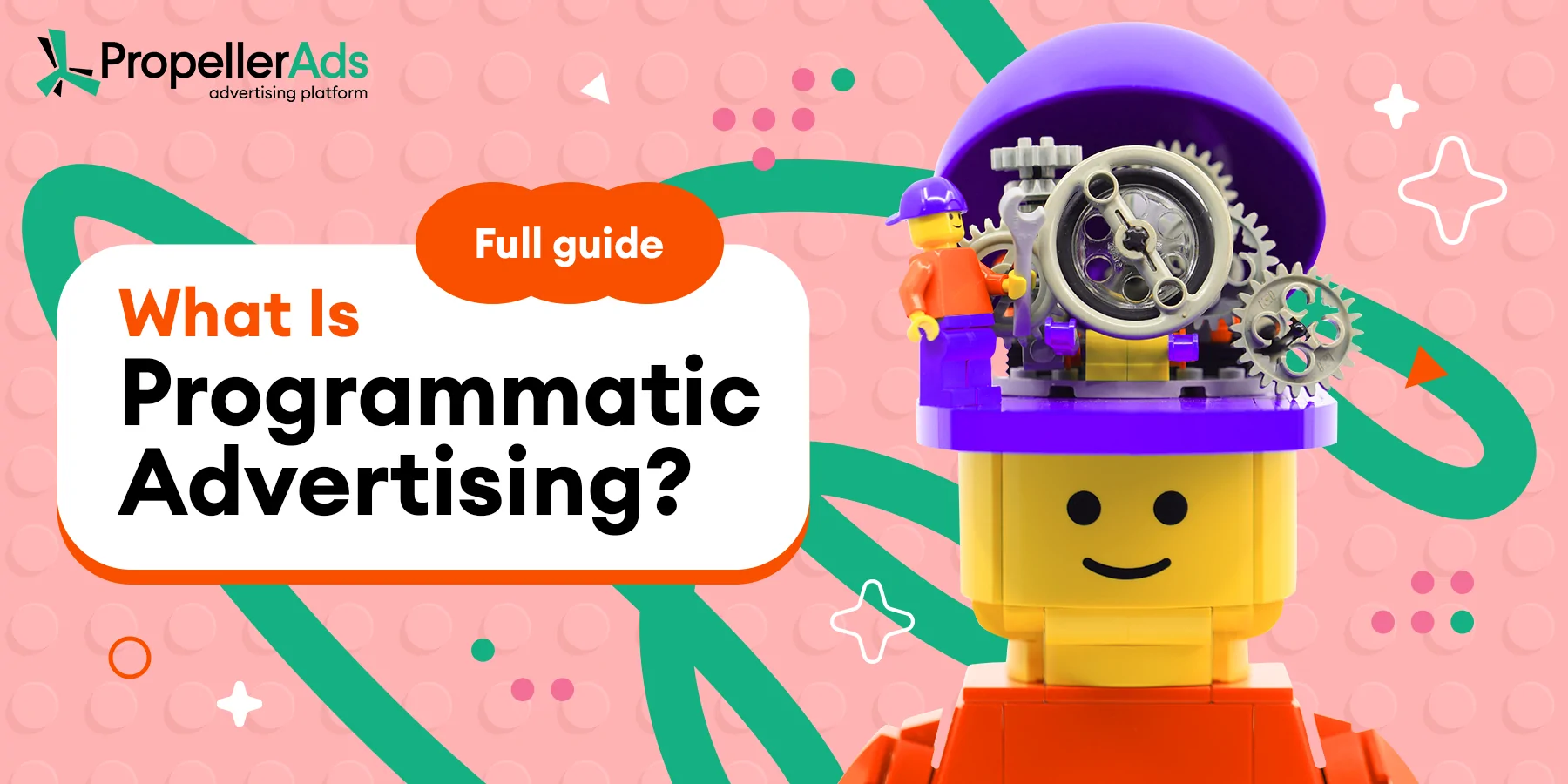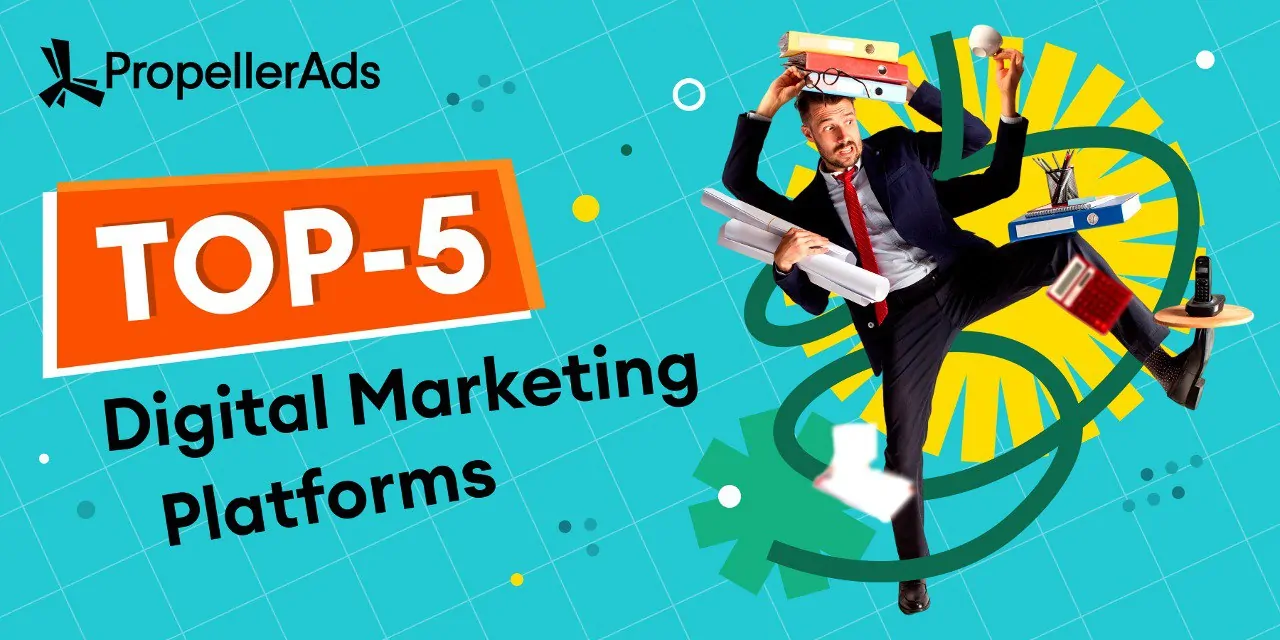What Is a Demand-Side Platform and Who Needs It?

This post is also available in:
ES
Ever feel overwhelmed by the sheer number of options involved in digital advertising? You’re not alone. With countless platforms, ad formats, and targeting choices, it can be a real challenge trying to figure out the best way to reach your audience and get the most bang for your buck. Luckily, there’s a secret weapon that can help simplify this whole process and take your advertising game to the next level. It’s called a demand-side platform, or DSP for short.
In this guide, we’ll explain DSPs’ workings and the amazing benefits they can offer advertisers of all sizes.
What is a DSP?
So, what exactly is a demand-side platform (DSP)? In simple terms, a DSP is a software platform that allows advertisers to buy ad space across a vast network of websites and apps in a super-efficient and automated way.
DSPs are connected to ad exchanges, which are digital marketplaces where ad space is bought and sold in real time. When you use a DSP, you can set your target audience, budget, and other campaign parameters, and the DSP will automatically bid on ad placements that match your criteria.
Here are some key features that make demand side platform advertising so valuable:
- Audience targeting: DSPs offer a wide range of targeting options, allowing you to reach your ideal customers based on demographics, interests, behavior, and even their location.
- Real-time bidding (RTB): DSPs use RTB technology to participate in auctions for ad space. This means you can bid on ad placements in real time, ensuring that you’re getting the best possible price for your ad inventory.
- Budget management: DSPs allow you to set and control your advertising budget, and even allocate your budget across different campaigns, channels, and even specific time periods.
- Reporting and analytics: DSPs provide detailed reports on your campaign performance so you can track your results and make data-driven decisions to optimize your campaigns.
Basically, DSPs streamline the ad buying process, making it more efficient, effective, and accessible to advertisers of all sizes. It’s growing exponentially in popularity and the DPS market size is expected to grow to $114.51 billion by 2030.
How Does a Demand-Side Platform Work?
Alright, let’s roll up our sleeves and peek under the hood to see how a DSP works its advertising magic. It might sound complicated, but we’ll break it down into simple steps:
#1. Setting the Stage
It all starts with you, the advertiser. You hop onto the DSP’s user-friendly interface and create your ad campaign. This is where you define your goals, set your budget, and choose your target audience.
You also upload your ad creatives, images, videos, or text – whatever you want.
#2. Finding the Right Audience
Now, it’s the DSP’s turn to shine. It uses its powerful algorithms and data insights to identify websites and apps where your target audience is most likely to be found.
This could be based on demographics like age, gender, and location, or interests, behaviors, and browsing habits.
#3. The Bidding War
Once your target audience is identified, your ad enters the real-time bidding (RTB) arena. This is where your demand-side platform competes with other advertisers to win the right to display your ad on a particular website or app.
The auction happens in milliseconds, and the winner is usually the highest bidder.
#4. Your Ad Gets Served
If your demand side platform wins the auction, congratulations! Your ad is instantly displayed to the user who matches your target audience criteria. And since this all happens in the blink of an eye, the user doesn’t even notice the bidding war going on behind the scenes.
#5. Tracking and Optimizing
The tool constantly tracks the performance of your DSP advertising campaigns, collecting valuable data on impressions, clicks, conversions, and more.
This data is then used to optimize your campaign in real-time, adjusting bids, targeting parameters, and even ad creatives to ensure you’re getting the best possible results.
#6. Reporting
Throughout your campaign, the DSP provides detailed reports on your performance. You can see how your ads are performing, which audiences are responding best, and where your budget is being spent. This transparency allows you to make informed decisions and fine-tune your strategy.
Benefits of Using a DSP
So, why should you consider adding a DSP to your advertising arsenal? Let’s dive into what makes DSP a game-changer for marketers:
- Access to a vast universe of ad inventory: DSPs connect you to an array of ad exchanges and publishers, giving you access to premium ad space on websites, apps, and even connected TVs.
- Precision targeting like a pro: Gone are the days of generic, one-size-fits-all advertising. DSPs allow you to target your ideal customers with laser precision, using a wide range of criteria like demographics, interests, behavior, and contextual relevance.
- Real-time bidding (RTB) and optimization: With DSPs, you can participate in real-time auctions for ad placements. DSPs also leverage machine learning algorithms to continuously optimize your campaigns and ensure you’re getting the best possible results for your budget.
- Transparency and data-driven insights: DSPs provide comprehensive reports and analytics that give you a clear picture of your campaign performance. You can track impressions, clicks, conversions, and other key metrics, so you can know what’s working and what’s not.
- Cost-effectiveness that won’t break the bank: By automating many of the manual tasks involved in ad buying, DSPs can save you both time and money. Plus, the real-time bidding and optimization capabilities of DSPs ensure you’re getting the most out of your ad spend.
In short, DSPs empower you to reach the right people, at the right time, with the right message, all while saving you time and money.
Who Needs a Deman-Side Platform?
So, who exactly can benefit from using a DSP? The good news is that DSPs cater to a wide range of advertisers, from small businesses with limited budgets to large enterprises with complex campaigns.
- Small and medium-sized businesses: DSPs level the playing field, giving smaller businesses access to the same powerful advertising tools and inventory as larger competitors.
- Large enterprises: For larger companies, DSPs offer scalability and efficiency. You can manage multiple campaigns across various channels and markets from a single platform, saving time and resources.
- Agencies: Agencies can leverage DSPs to manage campaigns for multiple clients, optimizing performance and maximizing ROI. DSPs also provide transparent reporting, making it easy to showcase results to clients.
- Specific use cases: DSPs are particularly beneficial for businesses that need precise targeting and real-time optimization. If your goals include brand awareness, lead generation, app installs, or e-commerce sales, a DSP can be a valuable asset.
However, it’s important to note that while DSPs offer numerous advantages, they’re not a one-size-fits-all solution.
Ultimately, the decision of what the best demand side platform is for you and even whether you should use a DSP depends on your specific needs, budget, and advertising goals.
If you’re looking to streamline your ad buying process, reach your target audience more effectively, and achieve better results, a demand-side platform could be the perfect solution for you.
Conclusion
While DSPs may seem complex at first glance, the benefits they offer are undeniable. Whether you’re a small business looking to dip your toes into programmatic advertising or a large enterprise seeking to streamline your ad-buying process, exploring the world of DSPs could be a game-changer for your marketing strategy.
Want to know what results you can get with Leadgen offers? Join our Telegram chat and ask experienced affiliates!





